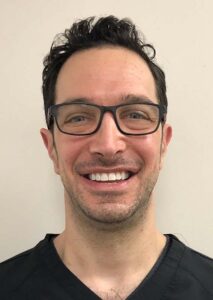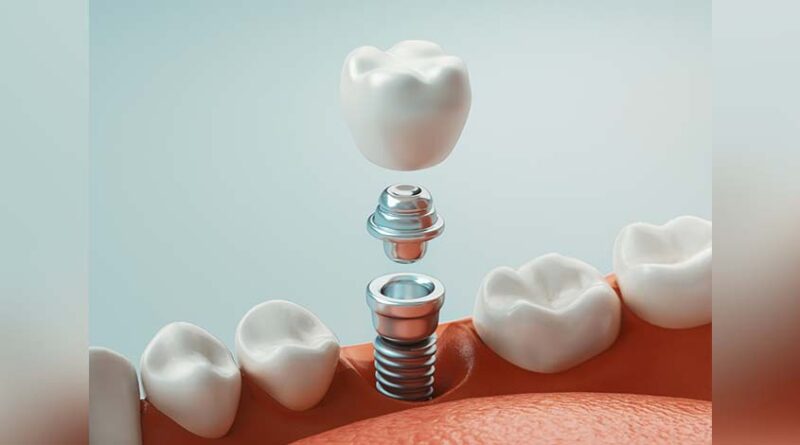Implants Can Replace Lost Teeth
A few things you should consider before you have any work done
By Deborah Jeanne Sergeant
If you have holes in your smile, dental implants offer an option for replacing lost teeth.
The technique has improved to the point where 90% of procedures result in teeth that last a few decades or much longer without complications or repairs, according to Sol Weinstein, dentist with the Weinstein Dental Group in Brockport.
Of his dental implant patients, “80% are patients seeking a single tooth replacement,” Weinstein said. “It’s pretty cost effective.”
The industry average is around $2,400 per tooth, plus more if other services are needed. The cost of dentures is about $2,500 for a full set. However, insurance typically offers some coverage, unlike implants.
Implants typically have no ongoing costs like dentures, which require adhesive, cleansing tablets, adjustments and replacement. Dentures last five to 10 years for most patients.
Since dentures cover the roof of the mouth, they interfere with the taste and feel of food. Certain foods are off limits with dentures because they are too difficult to chew. Some patients feel uncomfortable with an appliance in their mouths. They can wear down the bone from the friction while eating.
In addition to improving appearance, dental implants allow patients to chew and taste food normally. They also help prevent bone loss and help keep the adjacent teeth from shifting.
The process begins with visiting a dentist to review dental history, health history and receive X-rays.
“The dentist will need to look at your medications and discuss any health conditions,” Weinstein said. “Diabetes needs to be well controlled. If you are on blood thinners, it doesn’t mean you can’t be a good candidate for implants, but you need to talk about it.”
Any infections in the mouth will have to heal. If the bone in the jaw is not ideal, the patient will need to have more work done such as bone grafts.
For typical cases, “it’s very predictable, as predictable as placing a filling,” Weinstein said. “You have your outlier extreme cases, but the mainstream cases are very straightforward.”
Dentists can fit patients with a temporary tooth to fill in the gap cosmetically. It will not have the same function as the implant will.
Once the bone heals around the screw under the gumline, a dentist can add the crown—the part that looks like a natural tooth—to the connector that sits on the gumline.
One of the advantages that an implant has over a partial appliance is that the latter tends to torque the adjacent teeth, which can cause them to become loose. Weinstein added that the presence of the appliance can also trap food debris, which contributes to decay. They can also irritate gums.
“I don’t always recommend partials because it puts a half-life on your remaining teeth, though it’s a much more affordable option,” Weinstein said.
A fixed partial denture or bridge offers a more permanent option. To fit it, the adjacent teeth must be filed down, which can raise the risk for decay.
The recovery time after implantation varies case by case.
“It depends of course on how many implants and if bone grafts are involved,” said Oren Weiss, diplomate of the American Board of Periodontology at Rochester Periodontal & Dental Implants in Rochester.

The procedure is generally not painful, unless the patient receives bone grafts. Many people feel fine to go back to work the next day. The implanted tooth can be installed and functioning after three months. Weiss said that some whole jaw and mouth implant procedures can have implants and teeth installed on the same day.
Patients need “soft, non-chewy, room temperature or colder food for the first day,” Weiss said. “After that, avoid chewing on where the implant was placed for at least six weeks. Once the teeth are installed you can chew normally.”
Patients will have periodic check-ups to ensure that their mouths are healthy and should perform home care to promote oral health.
What Are Dental Implants?
By Thomaz Zahavi, DMD, MS
Dental implants are one of the most important advancements made in the field of dentistry.
They were first developed in the 1960s by an orthopedic surgeon researching the integration of titanium to bone. Since then, dental implants have continued to evolve and have since been used safely in millions of patients.
A dental implant is a special titanium post that is surgically inserted into the jaw bone. The bone then grows onto the surface of the implant to hold it securely in place, a process called osseointegration.
The implant serves as an artificial tooth root. A porcelain crown matching your teeth is then attached to the implant using a special connector, or abutment.
The end result is a beautiful, natural-looking tooth replacement that looks, feels and functions like your missing tooth.
From a single tooth replacement to a full mouth restoration or securing dentures, the range of clinical applications for dental implants is impressive.
Placing a dental implant requires special dental training. Patients requiring multiple implant placements, full mouth restorations or those needing bone augmentation should see a periodontist who specializes in dental implants and periodontal surgeries to ensure best outcome.
A dental implant is a long-term investment in your oral health. Good oral hygiene, and regular visits to your dentist or periodontist for cleanings and oral exams will ensure your implant will keep you smiling for years.


